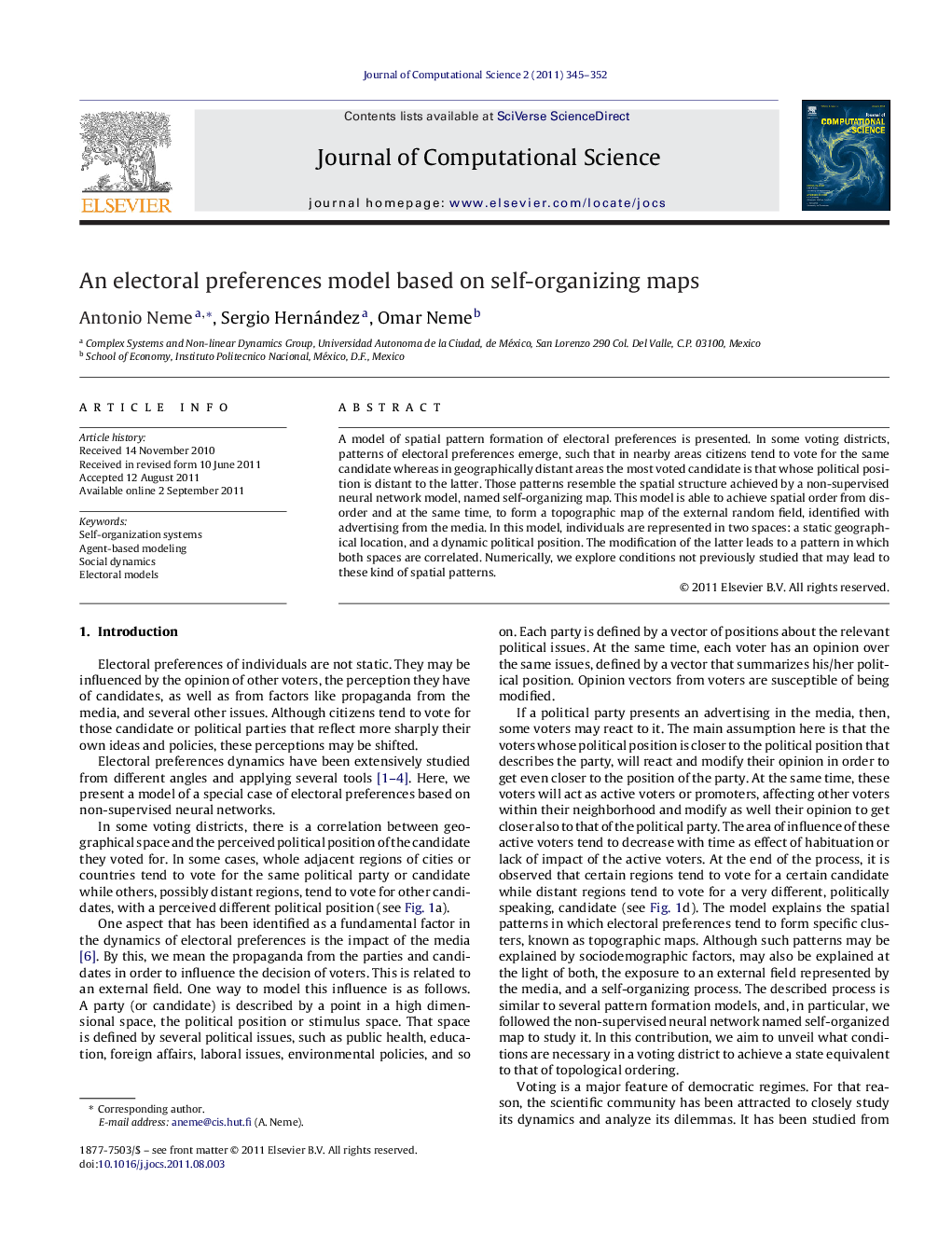| کد مقاله | کد نشریه | سال انتشار | مقاله انگلیسی | نسخه تمام متن |
|---|---|---|---|---|
| 429615 | 687611 | 2011 | 8 صفحه PDF | دانلود رایگان |

A model of spatial pattern formation of electoral preferences is presented. In some voting districts, patterns of electoral preferences emerge, such that in nearby areas citizens tend to vote for the same candidate whereas in geographically distant areas the most voted candidate is that whose political position is distant to the latter. Those patterns resemble the spatial structure achieved by a non-supervised neural network model, named self-organizing map. This model is able to achieve spatial order from disorder and at the same time, to form a topographic map of the external random field, identified with advertising from the media. In this model, individuals are represented in two spaces: a static geographical location, and a dynamic political position. The modification of the latter leads to a pattern in which both spaces are correlated. Numerically, we explore conditions not previously studied that may lead to these kind of spatial patterns.
► Spatial patterns in electoral processes may be described as topographic maps.
► We propose the use of self-organizing maps as models of electoral processes, as they form topographic maps.
► Numerical experiments show consistent results with empirical observations of electoral processes.
Journal: Journal of Computational Science - Volume 2, Issue 4, December 2011, Pages 345–352